It is difficult to define the best film directors of all time: everyone has their favorites and the value of an artistic work changes with the passage of time and with the transformations of society. What seemed extraordinary yesterday, perhaps because of the fashion and lifestyle of a bygone era, today may no longer have the same value.
This is by no means a list that seeks to impose an objective and definitive value for the best directors, but a tool to embark on a journey into history of cinema. An art partially devalued and reduced to mere entertainment for several decades now, in which the public is no longer able to distinguish between commercial audiovisual products and art cinema.
Unfortunately, the women who have been able to express themselves through the art of cinema have been few: the possibility of directing has rarely been given to them. But female filmmakers have made fantastic strides over the years, and we’ve seen some inspiring and utterly masterful work over the past few decades.
Georges Méliès

Georges Méliès (born Marie-Georges-Jean Méliès; December 8, 1861 – January 21, 1938) was a French illusionist, entrepreneur, actor, filmmaker, screenwriter, and producer. He is considered one of the pioneers of cinema, known for his innovative special effects and the use of fantasy and imagination in his films.
Méliès was born in Paris, France, in 1861. As a young man, he became interested in illusionism and became a skilled magician. In 1888, he opened his own magic theater, the Théâtre Robert-Houdin, in Paris.
In 1895, Méliès saw the first public screening of a film by the Lumière brothers. He was immediately fascinated by the new technology and began experimenting with cinema.
Méliès’s first film, Le Voyage dans la Lune (1902), is considered one of the first science fiction films. The film is based on Jules Verne’s novel From the Earth to the Moon.
Méliès is known for his innovative special effects. He often used photographic tricks, such as editing, dissolves, and stop-motion, to create realistic and fantastical special effects.
Georges Méliès is perhaps the most extraordinary and legendary character of the origins of cinema. It was he who developed early cinematographic techniques such as film fades and coloring. Méliès is very fascinated by the presentation of the Lumière brothers on December 28, 1895 at the “Cafè des Capucins”.
He intends to use the cinema at any cost. After the first projection of moving images in the story he approaches the two brothers to ask to buy one of their sets, but they refuse.
The film that consecrated Méliès’ success was Journey to the Moon. The public of the time had never actually seen anything like it: at the entrance to the shows many individuals assumed that they were being mocked.
The success was huge. The film was screened all over the world and several directors made remakes. Cinema had discovered its task of revealing the inner worlds of the imagination.
Watch Méliès films
Alice Guy-Blaché

Alice Guy-Blaché (née Guy; French pronunciation: [alis gi blɑʃe]; 1 July 1873 – 24 March 1968) was a French pioneer filmmaker, screenwriter, producer, and studio director. She is widely considered to be the first woman filmmaker. From 1896 to 1906, she was head of production at Gaumont Film Company, where she directed, wrote, and produced over 2,000 short films. Her films were characterized by their use of innovative special effects, their exploration of social issues, and their humor.
Alice Guy was born in Saint-Mandé, France, on 1 July 1873. She was the daughter of a journalist and a homemaker. Guy developed an interest in photography at a young age and began working as a secretary for Léon Gaumont, the founder of Gaumont Film Company. In 1895, she was given the job of overseeing the company’s new cinematograph camera.
Guy quickly became proficient in using the cinematograph and began making short films. She was given her own production unit in 1896 and became responsible for directing, writing, and producing all of the company’s short films.
Guy’s films were incredibly popular and helped to establish Gaumont as a leading film company. She experimented with a wide variety of genres, including comedies, dramas, and documentaries. She was also a pioneer in the use of special effects, such as double exposure and stop-motion animation.
Watch Alice Guy-Blaché films
Benjamin Christensen

Benjamin Christensen (September 28, 1879 – April 2, 1959) was a Danish film director, screenwriter, and actor. He is considered one of the most important pioneers of Danish cinema, and his films are known for their innovative use of cinematography, editing, and special effects.
Christensen was born in Viborg, Denmark, in 1879. He studied medicine at the University of Copenhagen, but he eventually decided to pursue a career in the theater. He began acting in 1901, and he quickly became one of the most popular stars in Denmark.
In 1906, Christensen made his directorial debut with the short film Den hvide slavehandel (The White Slave Trade). The film was a critical and commercial success, and it established Christensen as a major talent in the Danish film industry.
Christensen continued to make films throughout the silent film era, and he became known for his innovative use of cinematography, editing, and special effects. His most famous film is Häxan (1922), a silent documentary about the history of witchcraft. The film was groundbreaking for its use of slow motion, multiple exposures, and superimposed images.
Other notable films by Christensen include Blind Justice (1916), a drama about the death penalty, and The Devil’s Circus (1926), a horror film about a man who sells his soul to the devil.
Christensen continued to make films in the sound film era, but he never achieved the same level of success as he did during the silent era. He made a number of films in the 1930s and 1940s, but they were not as well-received as his silent films.
Buster Keaton
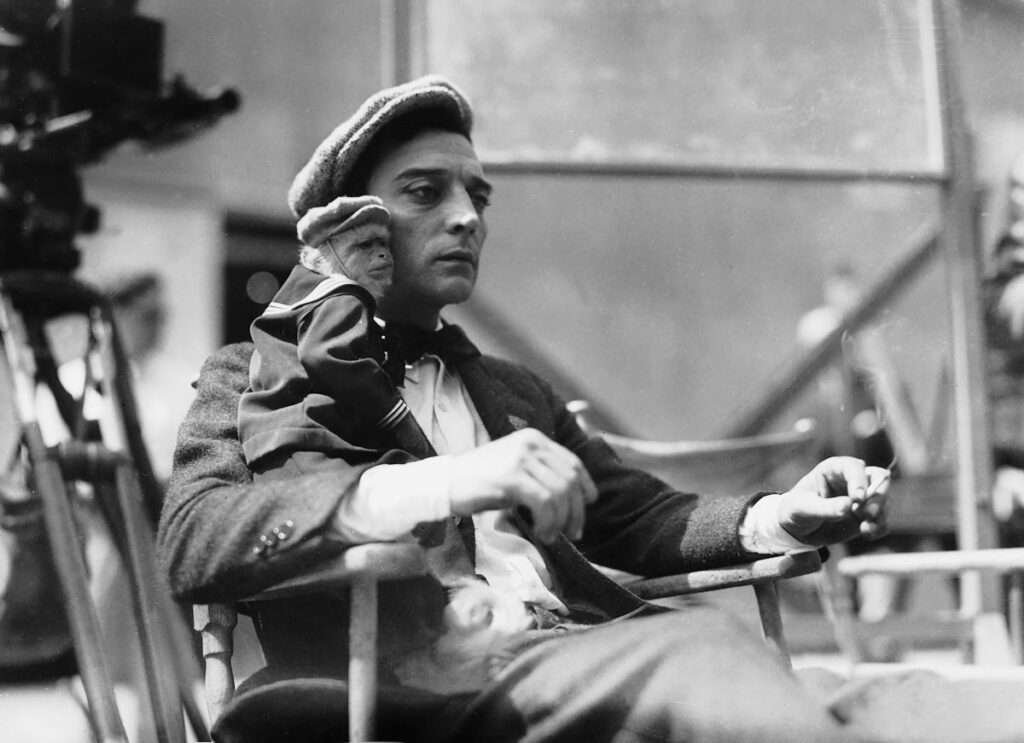
Joseph Frank Keaton, real name of Buster Keaton, was born in the United States, in Kansas, on October 4, 1895. Like Charlie Chaplin, he is the son of a couple of artists, but less unfortunate. The father has a vaudeville company where the famous saxophonist Mira Keaton and the magician Houdini perform.
Little Keaton participates in the shows since he was a child and often becomes the protagonist. His reckless performances and falls earned him the nickname “Buster”. His mimicry immediately appears prodigious.
Buster Keaton discovers cinema in 1917. According to Buster, it is the perfect tool to bring his characters to life. He leaves his family and moves to New York at the age of 22, where he meets the actor Roscoe Arbuckle, who specializes in throwing pies in the face.
Buster Keaton’s debut as a director is The High Sign: it’s the story of a tramp looking for his fortune in an amusement park who meets a billionaire and his daughter.
Keaton’s career began to decline in the late 1920s, as the popularity of silent films waned. He continued to make films in the 1930s and 1940s, but they were not as successful as his earlier work.
In the 1950s, Keaton’s career had a resurgence. He appeared in several films and television shows, and he was given an Honorary Academy Award in 1958.
Keaton is considered one of the greatest comedians of all time. He is known for his innovative physical comedy, his stoic expression, and his ability to create unforgettable characters. His films are still enjoyed by audiences today and continue to inspire filmmakers around the world.
Charlie Chaplin
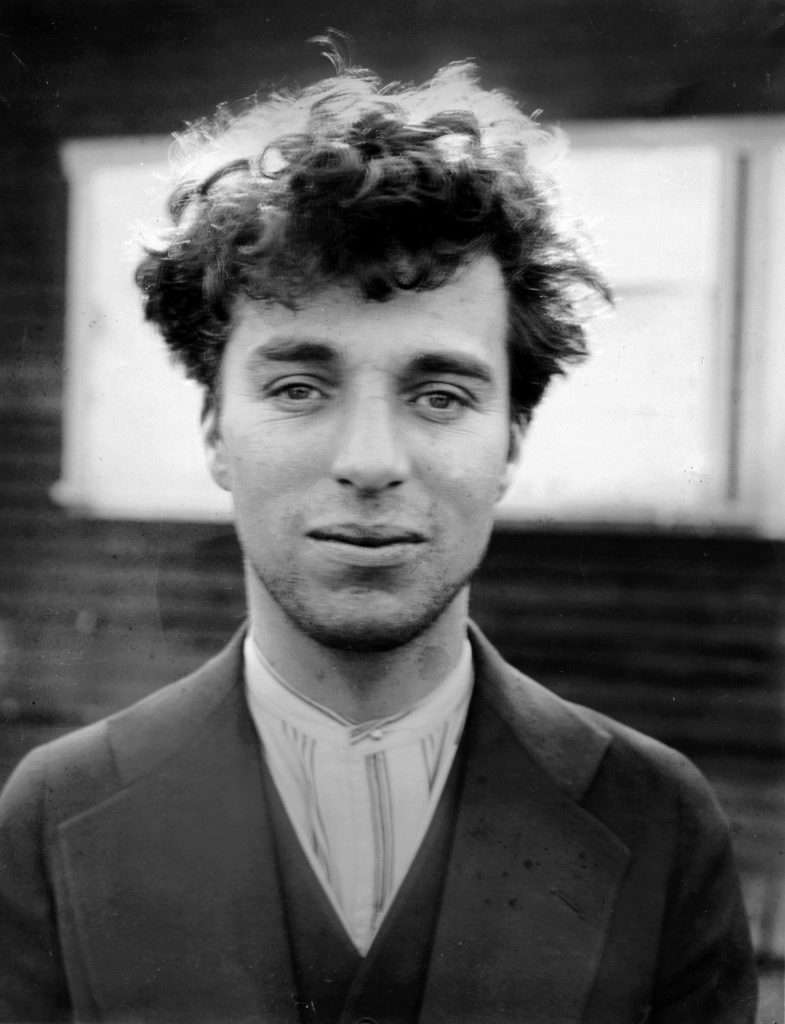
Charlie Chaplin (born Charles Spencer Chaplin, April 16, 1889 – December 25, 1977) was an English actor, comedian, filmmaker, screenwriter, composer, and pantomime master. He is widely regarded as one of the most influential figures in the history of cinema. Chaplin rose to fame as the screen persona “The Tramp” and is considered one of the best film actors of all time.
Chaplin was born in London, England, on April 16, 1889. He was the son of Charles Chaplin Sr., a music hall entertainer, and Hannah Chaplin, a music hall singer. Chaplin’s parents separated when he was three years old, and he was raised by his mother until she was placed in an institution for the mentally ill. Chaplin spent his childhood in workhouses and orphanages.
Chaplin began performing as a child, and he made his professional stage debut at the age of nine. He appeared in a variety of stage productions, including pantomimes, music halls, and vaudeville shows. In 1910, Chaplin moved to the United States to join a vaudeville troupe.
His tramp character becomes a lot more heartbreaking when you realize that Charlie Chaplin himself was an orphan who lived on the street. We all love the outcast and the wanderer must be crowned King of the outcast. Without dialogue, Chaplin had the ability to explore the full range of human feelings.
You can’t see The Kid without dancing, you can’t enjoy City Lights without rekindling your feeling of romance and you can’t watch The Great Dictator without making sure you reflect and laugh at the absurdity of war and the lust for power.
Watch The Kid
Fernand Leger

Born in 1881, Fernand Leger started out as a draftsman for an architectural firm in Paris in 1903. He was a truly eclectic musician, creator of tapestry and fogged glass animations, decorator, ceramist, sculptor, draftsman, illustrator, costume designer, established developer.
Son of a Norman dog breeder he moved to Paris where he was admitted to the Ecole des Beaux-Arts, as well as participating in the Julian Academy and also in the Louvre. In 1911 he exhibited the painting Nudes in the Woods at the Salon des Indépendants together with other works by his colleagues Robert Delaunay, Albert Gleizes, Henri Le Fauconnier, Jean Metzinger.
The discussion and also the debate that spread the term cubism. The development of Fernand Leger’s design is fueled by the dynamic Parisian creative climate: he is inspired by him Impressionism, the Fauves and even the paintings of Paul Cézanne.
DW Griffith

David Wark Griffith, also known as D.W. Griffith, was an American film director, producer, and screenwriter who is widely regarded as one of the pioneers of cinema. He is credited with developing many of the narrative and technical techniques that are still used in filmmaking today, and his films had a profound influence on the development of the art form.
Griffith was born in La Grange, Kentucky, on January 22, 1875. He was the son of a colonel in the Confederate Army, and he grew up in poverty after the Civil War. Griffith began working as a newspaper reporter and playwright in the early 1890s, and he moved to New York City in 1900 to pursue a career in theater.
In 1908, Griffith began working as a director for the American Mutoscope and Biograph Company, a pioneer in the production of short films. Griffith quickly rose through the ranks of the company, and he began to experiment with innovative filmmaking techniques. He developed the use of close-ups, long shots, and parallel editing to create more complex and engaging narratives.
Griffith has directed dozens of films, but Birth of a Nation is his best known work. Despite all its successes, the film also has some racial stereotypes. It is a pity that such an extraordinary historical film from a technological point of view also has such a discriminatory vision. Later films such as Intolerance and even Broken Blossoms will certainly attempt to ask for forgiveness and deal with these transgressions, but with little success.
Watch Intolerance
FW Murnau

Friedrich Wilhelm Murnau, also known as F.W. Murnau, was a German film director, producer, and screenwriter who is considered one of the most important figures in the history of cinema. He is best known for his expressionist films, such as Nosferatu (1922) and The Last Laugh (1924), which explored themes of alienation, anxiety, and the human condition.
Early life and career
Murnau was born in Bielefeld, Germany, on December 28, 1888. He came from a wealthy family and studied art and literature at the University of Münster. After graduating, he worked as a stage manager and director before entering the film industry in 1913.
Expressionist films
Murnau’s early films were made in the expressionist style, which was characterized by its use of distorted sets, exaggerated acting, and subjective camerawork. His most famous expressionist film is Nosferatu, a silent horror film about a vampire who preys on the residents of a small town. The film is considered a masterpiece of expressionist cinema and is still admired for its its haunting atmosphere and its innovative use of visual effects.
FW Murnau was another German immigrant to Hollywood, which went through the dramatic glow of German Expressionist with somewhat safer commercial films shot in the American period.
Faust is a story of principles that is just as terrifying as anything else in Nosferatu. And, perhaps his most successful, Sunrise: A Song of Two Humans won Best Picture at the Oscars. And an immense masterpiece like The Last Laugh. A film that took the history of cinema to the next level.
Watch The Last Laugh
Carl Theodor Dreyer

Carl Theodor Dreyer (February 3, 1889 – March 20, 1968) was a Danish film director and screenwriter who is widely regarded as one of the most influential figures in cinema history. Known for his austere and uncompromising style, Dreyer’s films often explored themes of faith, morality, and the human condition. His most celebrated works include The Passion of Joan of Arc (1928), Day of Wrath (1943), and Ordet (1955).
Born in Copenhagen, Denmark, Dreyer began working as a journalist before entering the film industry in 1913. He initially made short films and documentaries, but it was with his feature debut, The Parson’s Widow (1920), that he established his reputation as a serious filmmaker.
Master of Silent Cinema
Throughout the 1920s, Dreyer produced a series of acclaimed silent films that cemented his position as a master of the medium. His masterpiece, The Passion of Joan of Arc (1928), is a haunting and visually stunning portrayal of Joan of Arc’s trial and execution. The film’s stark black-and-white cinematography and use of close-ups and slow-motion create a powerful and moving experience.
Carl Theodor Dreyer is one of the most important directors in world cinema. Master of a very rigorous, Spartan and moral style, he deals with fundamental themes of the human spirit such as trust, love and death in his films. Dreyer has always denied the easy shortcut of industrial cinema.
His films did not have a great success with the public and were also long resisted by censorship as in the case of The Passion of Joan of Arc, which was outlawed by the Catholic Church. Another amazing Dreyer film is one of best horror ever made: Vampyr. Several modern directors have clearly stated that they were influenced and inspired by its design.
Ida Lupino

Ida Lupino was a British-American actress, director, screenwriter, and producer. She was one of the first women to direct films in Hollywood, and her work was often characterized by feminist and socially progressive themes.
Early life and career
Lupino was born in London, England, on February 4, 1914. She was the daughter of an actor and a dancer, and she began acting in theater at the age of five. In 1932, she moved to Hollywood to pursue a film career.
Acting career
Lupino quickly found success as an actress, appearing in a string of successful films, including The Light That Failed (1939), They Drive by Night (1940), and The Sea Wolf (1941). She was known for her beauty, her acting talent, and her ability to play both dramatic and comedic roles.
Directing career
In 1949, Lupino decided to switch to the other side of the camera and direct her first film, Not Wanted. The film, which dealt with a pregnant, unwed teenager, was a critical and commercial success, and Lupino became the first woman to win the Directors Guild of America Award for Best Director.
Ida Lupino did an interesting job. She started out as a young girl actress in the 1930s before co-founding a company of independent production in which he created, directed and also produced his own films. Obviously, this was generally unusual in the 1950s Hollywood.
His films dealt with taboo subjects just as The Hitch-Hiker is considered one of the best Film Noirs of all time. He finished his decade-long job directing virtually 70 TV episodes for shows including The Twilight Zone, The Fugitive, and Gilligan’s Island.
Fritz Lang

Fritz Lang was an Austrian-American film director, screenwriter, and novelist. He is considered one of the masters of world cinema, and he was particularly influential in the crime, noir, and science fiction genres.
Lang was born in Vienna in 1890. After studying architecture and law, he turned to filmmaking. His first film, “Harakiri” (1919), was a critical and commercial success.
In the 1920s, Lang directed some of the most important films of German expressionist cinema, including “Metropolis” (1927), “M” (1931), and “Dr. Mabuse, der Spieler” (1922).
With the rise of Nazism in Germany, Lang emigrated to the United States, where he continued to direct successful films, including “Fury” (1936), “The Woman in the Window” (1944), and “The Big Heat” (1953).
Fritz Lang had two jobs: one in Germany and also a second in Hollywood. His best cinema is that of the 1920s and 1930s while working in Germany, consisting of Metropolis, M and Dr. Mabuse’s Testament. When Hitler came to power, he left Germany.
Working on Hollywood for the next 40 years, like many other European directors, never reached the same levels as the masterpieces made in Europe. He had to adapt to the industrial and impersonal machine of American cinema. But he still made great movies like Fury, The Scarlet Street and The Big Heat too.
Watch M
Jean Epstein

Jean Epstein was a French pioneer of cinema, novelist, and film theorist. He is best known for his 1928 film “Cœur fidèle,” which is considered a masterpiece of avant-garde cinema.
Epstein was born in Warsaw, Poland, in 1897. He moved to France with his family in 1905 and began writing and publishing poetry and novels. He became interested in cinema in the early 1910s and began making short films in 1916.
Epstein’s early films were experimental and often abstract. He used innovative camera techniques and editing styles to create films that were unlike anything that had been seen before. His 1922 film “L’Auberge rouge” is considered one of the first examples of French Impressionist cinema.
Jean Epstein was a very eclectic character. He is interested in both cinema and progressive literature, scientific research, philosophy, psychology. Fundamental is the meeting with Blaise Cendrars who in 1921 promoted the magazine La poesie aujourd ‘hui, a book of knowledge. His most important film is perhaps Faithful Heart, as well as The Fall of the Usher House.
Ernst Lubitsch

Ernst Lubitsch was born in Berlin on January 28, 1892. He was among the first directors to end up being a true celebrity in Hollywood and also to have a large target market without always counting on the participation of stars in your films. His light style, common to his own comedy film was dubbed the Lubitsch Touch by Billy Wilder.
Born into a poor family of German Jews, Lubitsch as a young man tries to make ends meet by selling textiles. He becomes friends with Max Reinhardt, the supervisor of the German theater in Berlin, who makes him work as an assistant director. He was then hired as an actor and also collaborated with Reinhard in several film productions, where he learned the technique.
At that time, cinema was still in a pioneering and exploratory phase. It is not difficult for Lubitsch to direct the first low-budget silent films, where he also plays the lead role.comic slapstick.
Sergei Eisenstein

Sergei Mikhailovich Eisenstein was a Soviet film director, screenwriter, film editor, and film theorist. He is noted in particular for his silent films Strike (1925), Battleship Potemkin (1925), and October (1928), as well as the historical epics Alexander Nevsky (1938) and Ivan the Terrible (1944–1946).
Eisenstein was born in Riga, Latvia, on January 23, 1898. He studied architecture and engineering at the Petrograd Institute of Civil Engineers, but he eventually turned to filmmaking. His first film, Strike, was a propaganda film about a workers’ strike in Russia. It was a critical and commercial success, and it established Eisenstein as one of the leading filmmakers of his generation.
In 1925, Eisenstein directed Battleship Potemkin, a film about a mutiny on a Russian battleship. The film is considered one of the most important films ever made, and it is known for its innovative editing techniques and its use of montage.
Sergei Eisenstein turned cinema into a weapon. Together with the others Soviet filmmakers, their experiments revealed what moving images can do. They let go of the power that cinema needs to relocate individuals politically as well as emotionally.
Strike is an unshakable portrait of the dispute over the course of work. October (Ten Days That Shook the World) showed a whole revolution going on. And, of course, as you may have seen in every course of history of cinema, the Odessa staircase sequence in Battleship Potemkin will surely be considered the greatest example of montage and grandiose cinematic staging.
Watch Battleship Potemkin
Dziga Vertov

Born in Poland in 1896, Dziga Vertov is one of the most important directors of the Russian avant-garde. He moved to Russia where he first studied medicine and then poetry and fiction. In Moscow he begins to take an interest in cinema thanks to surrealism.
He takes the nickname by which he becomes known, Dziga Vertov. After the Russian Revolution, he found work in the editorial office of the week of cinema, a rotogravure with propaganda content managed by the Socialist Party.
As a staff member he made his first short film, The Anniversary of the Revolution , however his true cinematic individuality begins to emerge with the docudrama collection Kino Pravda, a 20-minute film in which he begins to elaborate his theory on cinema and reality, which leads to a manifesto called Kinoglaz.
The poster specified that the camera should film reality as authentically as possible. His universally recognized masterpiece is the experimental film Man with a Movie Camera.
Watch Man with a Movie Camera
Jean Vigo

Jean Vigo was a French film director who helped establish poetic realism in film in the 1930s. He is best known for his two films, Zéro de conduite (1933) and L’Atalante (1934), which are both considered classics of French cinema. Vigo’s films are characterized by their poetic realism, their humanist themes, and their use of innovative editing techniques.
Vigo was born in Paris on April 26, 1905. His father was an anarchist journalist, and his mother was a painter. Vigo grew up in a bohemian milieu and was exposed to art and literature from a young age. He began making films in the early 1920s, and he quickly developed a reputation for his experimental and innovative style.
Directors such as Jean Renoir have worked in the style of poetic realism, with films such as The Great Illusion and The Rule of the Game. Julien Duvivier with The Bandit of the Casbah and also Marcel Carné with The Port of the Mists and The Lost Lovers. Halfway between these 2 currents, with a progressive as well as realistic aspect, is the work of Jean Vigo.
Jean Vigo shot his only two films, Zero for Conduct and L’Atalante, in a feverish state at the beginning of the illness that would have led to his death. In some cases he was forced to stay on a field hospital bed on set. Friends and even colleagues were surprised that he wanted to continue working despite his serious condition.
However Jean Vigo did not want to stop, for him finishing the shooting of the film was a real existential mission. He knew he was sick as well as he understood that his time was running out. Is it perhaps this pressure, this need that allowed him to create 2 masterpieces?
René Clair

René Clair (born René-Lucien Chomette; 11 November 1898 – 15 March 1981) was a French filmmaker and writer. He is considered one of the pioneers of cinema, and his films were known for their innovative use of sound, camera techniques, and editing. Clair was also a skilled storyteller, and his films often explored themes of love, loss, and social change.
Clair was born in Paris, France, in 1898. He grew up interested in art and literature, and he began writing and publishing poetry and novels in his early teens. In the early 1920s, he became interested in cinema, and he began making short films. His early films were experimental and often abstract, but they also showed a great deal of promise.
René Clair is popular in Anglo-Saxon nations and in Italy. In his search for a global human comedy between background and technological progress, he is the filmmaker who binds Charlie Chaplin to De Sica, long before the crazy young people of Nouvelle Vague.
Cinema is the essential passion of René Clair’s entire life. attends both criticism and film production with interest. One of his articles on cinema is entitled The son of the century waiting for a film. At the same time it relates to the future advancements of the 7th art.
He is not very different intellectually from his fellow of avant-gard. Born and raised in the milieu of the Parisian commercial bourgeoisie, he recognizes the declining beauty of the Belle Epoque. His first creation published in 1916 is a farewell to Emile Verhaeren.
Kenji Mizoguchi
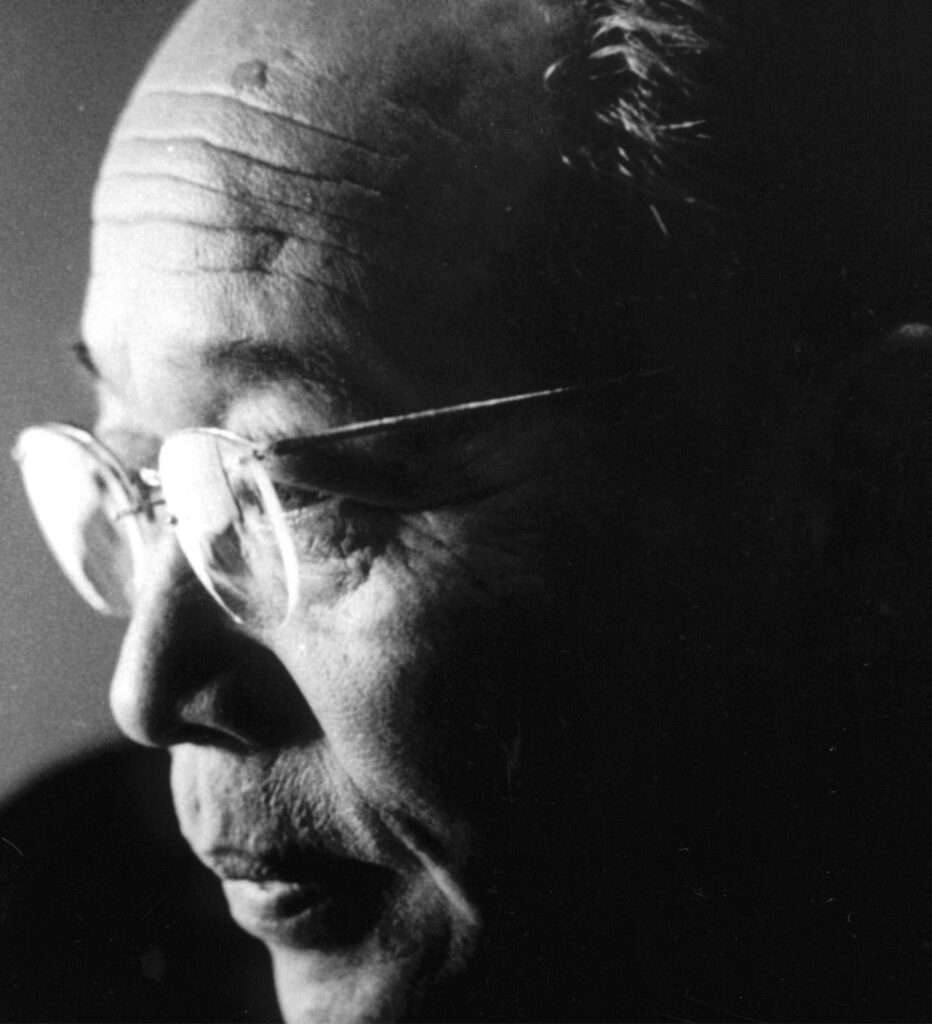
Kenji Mizoguchi was a Japanese filmmaker considered one of the most important and influential in the history of cinema. Born in Tokyo in 1898, he began working in cinema as an assistant director in the 1920s and directed his first film in 1923. Over the course of his career, Mizoguchi directed over 80 films, ranging across genres including drama, history, melodrama, and mystery.
Mizoguchi’s films are characterized by a strong focus on the female condition and social themes. His protagonists are often strong and determined women who struggle to assert themselves in a patriarchal society. Mizoguchi is also known for his expressive use of cinematography and editing, which creates evocative and engaging atmospheres.
The death of his mother when Kenji is 17 forces the young man to find a job. At 22 he entered the cinema as an actor and in the short space of two years he directed his first film. In 1925 he has already directed more than 30 very different films: from contemporary films (gendaigheki) to historical films (jidaigheki), academic films or films drawn from Western literature.
In subsequent years, the bombing of Tokyo during World War II and the natural humidity of the climate will cause other irreparable damage to the Japanese film heritage.
Watch Mizoguchi films
Yasujiro Ozu

Yasujiro Ozu was a Japanese filmmaker considered one of the most important and influential in the history of cinema. Born in Tokyo in 1903, he began working in cinema as an assistant director in the 1920s and directed his first film in 1927. Over the course of his career, Ozu directed over 50 films, ranging across genres including drama, comedy, and melodrama.
Ozu’s films are characterized by a minimalist use of cinematic technique, with a particular focus on everyday life and the relationships between people. Ozu is also known for his use of the “tatami shot”, a high-angle shot that frames the characters sitting on the tatami, the traditional Japanese mat.
Yasujiro Ozu was born in the Fukagawa district of Tokyo, the second child of 5 brothers and sisters. He has always stayed away from school classes to see films like Quo Vadis or The Last Days of Pompeii. In 1917 he saw the film Civilization and decided he intended to become a director. At the age of 17, he was thrown out of the dorm room after being accused of writing a love letter to a lower-class boy.
Ozu was hired by the Shochiku Film Company, as an assistant in the film department, on August 1, 1923, against his father’s wishes. His home was destroyed in the 1923 earthquake, however no members of his family were injured. On December 12, 1924, Ozu began a year of service in the armed forces. In 1927 he was involved in a fight in which he punched another staff member at the studio bar. In September 1927 he directed his first film, Sword of Penitence.
Watch Ozu films
Kaneto Shindo

Born in Hiroshima in 1912, Kaneto Shindo grew up in a landowning family, which then fell into disrepair. In 1927 he entered the Shinko film workshops, where he began operating in Japanese cinema, first as an assistant to the scenography.
He works as a director in the famous film Revenge of the 47 ronin, the director and also his teacher Kenji Mizoguchi. Throughout the 1940s and 1930s, however, his main commitment ended up being as a screenwriter. In the 1940s he wrote his first film scripts for filmmakers of the quality of Kon Ichikawa, Keisuke Kinoshita, Fumio Kamei, Tadashi Imai and even Kōzaburō Yoshimura.
His most vital collaboration is that with Kozaburo Yoshimura, with whom he founded in 1951 the independent company Società del Cinema Moderno. The director who most strikes his cinema, especially as regards the theme of the female condition and the stability of his female personalities, is however Kenji Mizoguchi, with whom Shindo himself makes a long docudrama.
Watch films by Kaneto Shindo
John Ford

John Martin Feeney was born on February 1, 1894, in Cape Elizabeth, Maine. His father was an Irish carpenter, and his mother was a housewife. Ford grew up in a Catholic family and always retained a strong sense of his Irish identity.
Ford began his career in film as an actor, screenwriter, and assistant director. In 1917, he directed his first film, A Woman’s Fool. Over the course of his career, Ford directed over 140 films, ranging across genres including the Western, drama, comedy, and historical film.
John Ford was one of the few directors to win 4 Oscars. Start making movies in the era of silent cinema. John Ford is one of the greatest directors in the history of cinema, recognized as a master by colleagues such as Akira Kurosawa, Martin Scorsese, Sam Peckinpah, Sergio Leone, Clint Eastwood, Wim Wenders, as well as François Truffaut.
Their films were influenced by John Ford’s cinematic style. According to Orson Welles, John Ford was the greatest director ever. Excellent film critics have actually praised his complex and lengthy filmography, from Truffaut to Jean-Luc Godard.
The popularity of John Ford, master of westerns, is linked to the collaboration with famous stars. The face that John Ford’s films instantly evoke is that of John Wayne, with whom he made 21 films, but also Victor McLaglen, Henry Fonda, John Carradine and Lee Marvin.
Otto Preminger
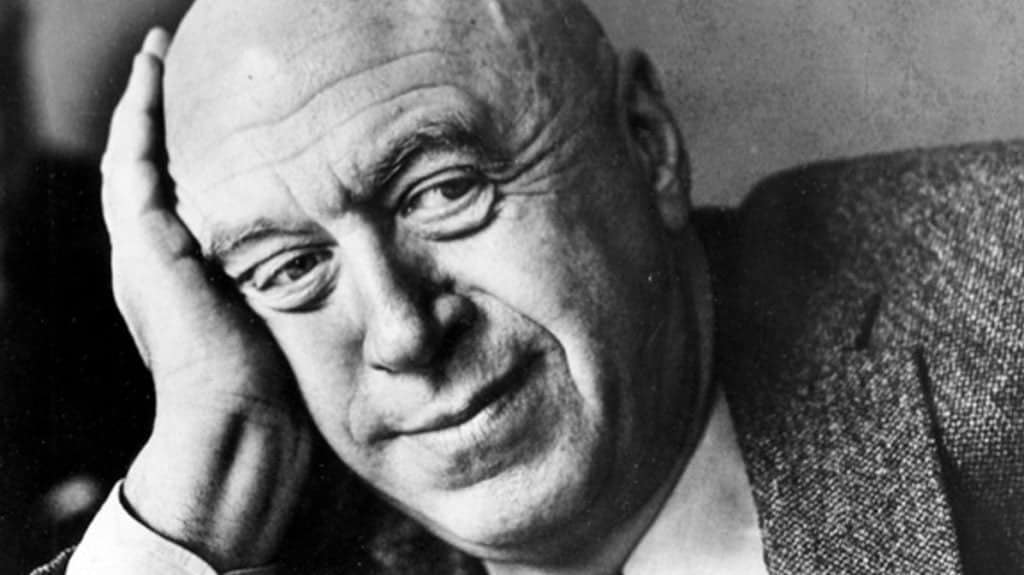
Otto Preminger (5 December 1905 – 23 April 1986) was an important director of Austro-Hungarian origin, also producer and actor in Hollywood and in the setting of the New York theater on Broadway. In April 1935, while Preminger was working in the theater in Vienna, he received an invitation from producer Darryl F. Zanuck, founder of Twentieth Century-Fox, who was looking for new talent. Preminger accepted an invitation to work for Fox in Los Angeles.
His artistic career spanned more than 50 years. His fame is mainly due to important film noir as Laura (1944) and Fallen Angel (1945 ), as well as some important adaptations of novels and plays. Many of his films had problems in Hollywood: the topics covered were taboo at that time. Drug addiction in Man with the Golden Arm, rape in Anatomy of a Murder and homosexuality in Storm over Washington (Advise & amp; Consent).
His reputation as a choleric, violent and arrogant man helped make him an authoritarian and legendary figure at the same time, but perhaps it was just a strategic attitude to carry out his productions and limit the intrusiveness of the executives of the Studios. He was twice chosen for the Oscar as Best Director.
Michael Powell

Michael Powell, born September 30, 1905, was an English director, famous for his collaboration with Emeric Pressburger. With their production company The Archers, together they have developed a collection of classic British films, most notably The Life and also Death of Colonel Blimp (1943), A Canterbury Tale (1944), I Know Where I’m Going! His 1960 film Peeping Tom was harshly criticized, while today he is considered a cult film. He was so vilified on the first launch that his career was seriously damaged.
Numerous directors like Martin Scorsese, Francis Ford Coppola and even George A. Romero really pointed to Powell as a teacher. In 1981 he received the BAFTA Academy Fellowship Award together with his partner Pressburger, the greatest honor the British Film Academy can offer a director.
Jean Cocteau

Jean Cocteau was a French poet, playwright, novelist, filmmaker, designer, and artist. He was a central figure in the French avant-garde in the early 20th century, and his work helped to shape the development of modern art and literature.
Cocteau was born in Maisons-Laffitte, France, in 1889. He began his career as a poet and playwright, and he quickly gained a reputation for his experimental and innovative work. His first play, Les Mariés de la Tour Eiffel (1921), was a collaboration with Pablo Picasso and Erik Satie, and it helped to launch the Dada movement in France.
Cocteau also worked as a filmmaker, and he directed some of the most important films of the French avant-garde. His most famous films include Le Sang d’un poète (1930), La Belle et la Bête (1946), and Orphée (1950). These films are characterized by their use of symbolism, their exploration of the subconscious, and their innovative use of cinematic techniques.
The childhood of Jean Cocteau promptly revealed his interest in the visual arts and also in poetry. In reality, little Jean, remaining in poor health, invests hours in building tiny puppet theaters in the courtyard and in illustration.
When he sees his parents often go out in the evening to go to the theater, leaving him alone at home, the need to attend theatrical performances becomes an obsession for him. An interest in art that he will be able to realize a few years later. Among his masterpieces The Testament of Orpheus and The blood of a poet.
Watch The Testament of Orpheus
Alfred Hitchcock

Alfred Hitchcock was born on August 13, 1899, in Leytonstone, England. He was the youngest of three children born to William Alfred Hitchcock, a paper merchant, and Emma Jane Hitchcock, a homemaker. Hitchcock attended St. Ignatius’ College in London and later enrolled in the London County Council School of Marine Engineering and Navigation. However, he left school at the age of 16 to pursue a career in cinema.
Son of a modest merchant family, his father was a fruit and vegetable trader, Alfred Hitchcock studied in a strict boarding school of Jesuit fathers. His interest in film work came when Famous Players-Lasky opened a branch in London. First he works in the office dealing with subtitles, then moves on to directing and writing.
In the meantime he changes production, starts collaborating with British International Pictures with which he shoots his first sound film, Blackmail, in 1929. It was written and conceived as a silent film, but with the arrival of the new technology Hitchcock changes script before shooting.
From then on he enjoyed appearing as an extra in all of his films, eventually becoming a well-known TV personality a few decades later. He is considered by all to be the greatest director of the thriller genre.
Luis Bunuel
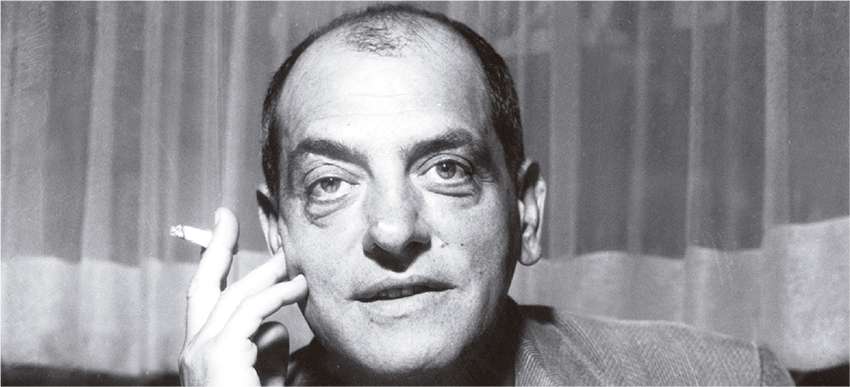
Luis Bunuel, master of surrealist cinema, was born in Calendar, a small town in Aragon, Spain, on February 22, 1900. He was sent to study at a Jesuit university. Probably, this experience made up of rigid rules and boring daily life contributes to developing his profound hostility towards Catholic institutions.
Moving to Madrid to carry out research at the university, he has the opportunity to be totally free to know what interests him most: literary works and philosophy. Among his close friends from the university period are the poet Federico Garcia Lorca and Salvador Dalì, the surrealist painter with whom he will develop a long association.
He discovers the films of Buster Keaton and Fritz Lang and works in Paris as an assistant to the director Jean Epstein. A cinema outside of narrative logic, inside the territory of the absurd and the imagination. Many of his unmissable masterpieces: The discreet charm of the bourgeoisie, The exterminating angel, Beauty of the day, The ghost of freedom. And many others.
Watch The Exterminating Angel
Mario Monicelli
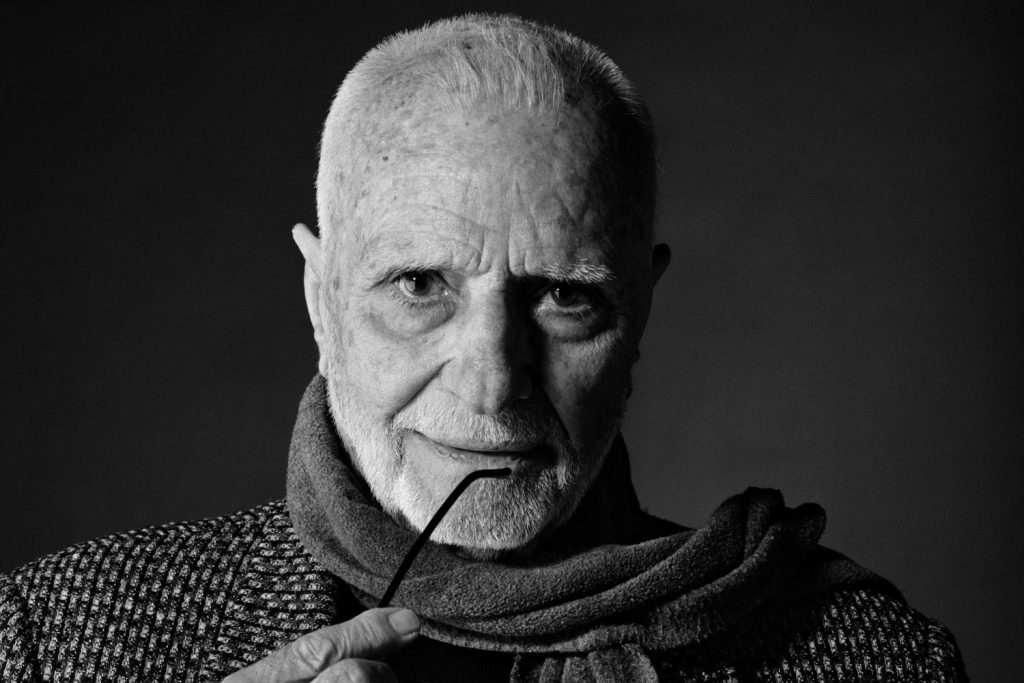
Mario Monicelli (May 16, 1915 – November 29, 2010) was an Italian film director, screenwriter, and actor. He is considered one of the most important directors of Italian comedy, and his films are known for their sharp humor and social satire.
Monicelli was born in Rome on May 16, 1915. He studied law at the University of Rome, but he eventually decided to pursue a career in cinema. He began his career as a screenwriter, writing for some of the most important Italian directors of the era, including Vittorio De Sica, Luchino Visconti, and Roberto Rossellini.
In 1948, Monicelli made his directorial debut with the film Totò cerca casa, a comedy starring Totò. The film was a critical and commercial success, and it marked the beginning of Monicelli’s career as a director.
Monicelli directed over 50 films, including some of the classics of Italian comedy, such as I soliti ignoti (1958), La grande guerra (1959), Amici miei (1975), and Amici miei atto II (1982). His films are characterized by sharp humor and social satire, and they often explore themes of class, politics, and society.
Monicelli worked with some of the greatest Italian actors, including Totò, Vittorio Gassman, Ugo Tognazzi, Marcello Mastroianni, and Sophia Loren. His films had a significant impact on Italian culture, and they helped to make Italian comedy one of the most popular film genres in the world.
Chantal Akerman

Born in Brussels in 1950, Chantal Akerman was born to Jewish parents who emigrated from Poland. His mother’s grandparents and also his mother were deported to Auschwitz.
She decides to devote herself to cinema after being struck by the film The Bandit at 11 by Jean-Luc Godard in 1965 and also after a course of study at the Brussels Film School in 1971 she moves to the United States, to New York ..
In the United States made his first short film Saute ma ville, a burlesque-style disaster film made at the age of 18 about a girl who blows up her oven and also ends up destroying the entire city.
The film gets crucial attention and even gratitude from Belgian director André Delvaux. Currently from this work we understand the passion for a avant-garde cinema, outside the rules and any kind of commercial classification.
Orson Welles
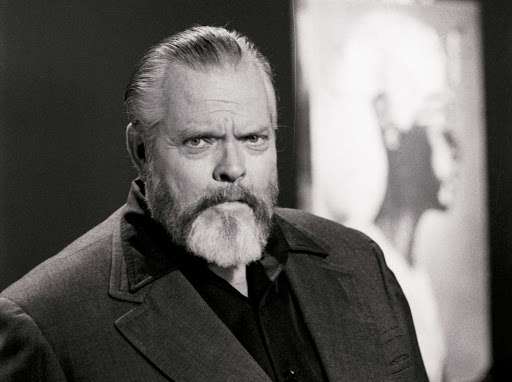
George Orson Welles was born on May 6, 1915, in Kenosha, Wisconsin. He was the son of Richard Head Welles, an inventor, and Beatrice Ives Welles, a concert pianist. Welles was a gifted child who showed an early interest in acting and directing. He began his career in the theatre as a teenager, and he quickly made a name for himself as a talented and innovative director.
In 1934, Welles moved to New York City to pursue a career in radio. He quickly became a popular radio personality, and he was known for his dramatic and innovative style. In 1938, he directed and narrated a radio adaptation of H.G. Wells’ The War of the Worlds, which caused widespread panic among listeners who believed that an alien invasion was taking place.
When Orson Welles created Citizen Kane, it was a curse as well as a real blessing. Upon release, the film was not immediately hailed as the greatest film ever made. The path of the films later became an uphill battle for Welles. Interference at work required him to become a independent filmmaker and also spent the next 3 years finishing the films he left unfinished.
Welles continued to direct, act, and produce films throughout his career. However, he never again achieved the same level of success as he did with Citizen Kane. He made a number of notable films, including The Magnificent Ambersons (1942), Touch of Evil (1958), and F for Fake (1973).
Watch The Stranger
Akira Kurosawa

Akira Kurosawa was born on March 23, 1910, in Ōimachi, Ōmori district of Tokyo. He began his career in cinema in 1936 as an assistant director for the Toho Film Company. In 1943 he directed his first film, Sugata Sanshiro, a martial arts film that was a critical and commercial success.
The 1950s
In the 1950s, Kurosawa directed some of his most important films, including Rashomon (1950), Seven Samurai (1954), and Hidden Fortress (1958). These films were critically acclaimed and won numerous awards, including the Academy Award for Best Foreign Language Film for Rashomon.
The 1960s
In the 1960s, Kurosawa continued to direct successful films, including Yojimbo (1961), Sanjuro (1962), and Kagemusha (1980). These films explored themes such as violence, revenge, and destiny.
It is not necessary to understand the Japanese culture or be a scholar of the country’s Sengoku period to appreciate what Akira Kurosawa’s work indicates. The thing is, Kurosawa has taken stories that are incredibly unique and also made them globally relevant. His stories took motifs typical of his own culture but also of Shakespeare and discovered a message that has resonated throughout the world.
Of all the directors on this list, perhaps no one has had as much global influence on cinema as Mr. Kurosawa. From his impressive samurai like Yojimbo and Seven Samurai to his contemporary dramatization like Ikiru and The Bad Sleep Well, there is something we can all feel from his work.
Billy Wilder
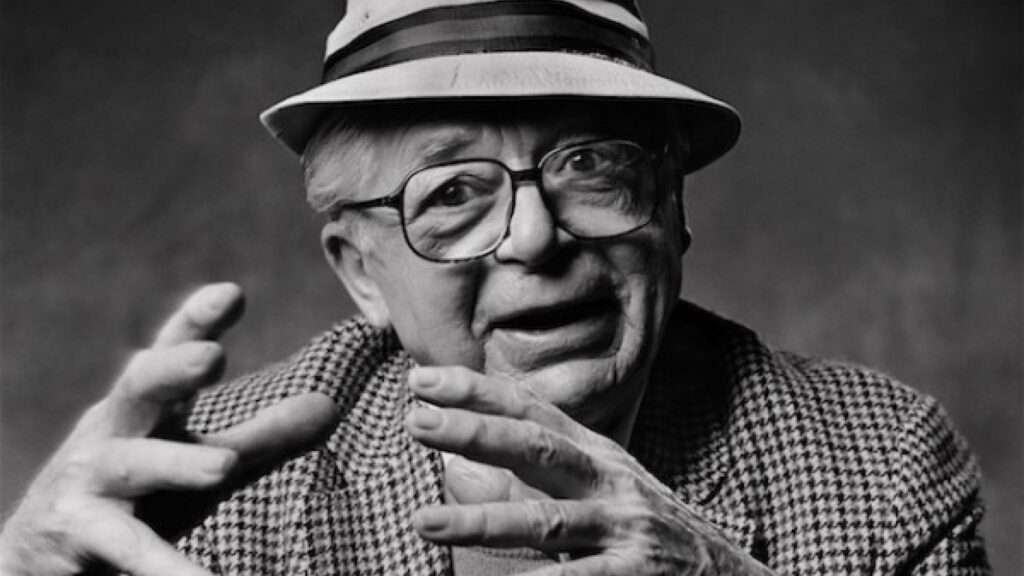
Samuel “Billy” Wilder was born on June 22, 1906, in Sucha, Austria. He began his career as a journalist in Vienna, but he soon switched to writing screenplays. In 1933, he fled to Paris to escape the Nazi regime, and then to Hollywood in 1934.
In Hollywood, Wilder quickly established himself as a successful screenwriter. He wrote the screenplays for a number of popular films, including Ninotchka (1939), Double Indemnity (1944), and The Lost Weekend (1945).
Wilder began directing his own films in the late 1940s. He made his directorial debut with The Major and the Minor (1942), but his breakthrough film came with Double Indemnity, a noir thriller that he also co-wrote.
Billy Wilder has managed to work within the studio system, as well as still giving his movies a distinct point of view and personality. It helped that he was also a writer, however, regardless of the subject, Billy Wilder always told his stories consistently.
We can’t think of Film Noir without his Indemnity , his haunting meta-drama Sunset Blvd. showed a dark heart at the center of popularity, and so did his funny comedy Some Like It Hot is close to the masterpiece. Don’t forget hers dramas raw and sincere Days lost (The Lost Weekend) and also The Apartment.
Federico Fellini

Federico Fellini was born on January 20, 1920, in Rimini, Italy, to a modest family. He showed an early interest in drawing and cinema, and began working as a cartoonist and illustrator for the newspaper Il Resto del Carlino.
In 1939, he moved to Rome to study art, but soon became involved in the world of cinema. In 1943, he began working as an assistant director for Roberto Rossellini, and in 1945 he made his directorial debut with the short film The Voice of the Moon.
Fellini began to gain attention with his second film, I Vitelloni (1953), a satirical portrait of Italian youth in the postwar era. The film was a critical and commercial success, and established Fellini as one of the most promising directors of his time.
In the years that followed, Fellini continued to make increasingly original and experimental films, exploring the nature of imagination and dreams. Among his most important films of this period are La Strada (1954), Nights of Cabiria (1957), La Dolce Vita (1960), 8½ (1963), Juliet of the Spirits (1965), Satyricon (1969), Roma (1972), Amarcord (1973).
Outside of the post-war Neorealism movement, there is no Italian cinema without Federico Fellini. Explaining is accessory, the adjective that comes to mind is “wonderful”. La Dolce Vita is a figurative journey into an era that the film itself transforms into myth and reality, just as looking Rome seems to enter the most important painting museum.
I Vitelloni is a story of youth training, just as 8 1/2 is a poem about the creative process, about the mysterious labyrinth that is the human psyche. Probably no one has created as many masterpieces as Federico Fellini, reaching a very high peak, where the great artists of human history meet.
Ingmar Bergman

Born on 14 July 1918 in Uppsala in Sweden, Ingmar Bergman was just one of the most important filmmakers of the cinematic history. His filmography has a severe coherence in exploring the torments of the human being. Among his dramas there are some of the most significant movie works of all time.
Bergman’s breakthrough film came in 1951 with Summer with Monika, a coming-of-age story about a young couple’s summer romance. The film was a critical and commercial success, and it established Bergman as a major new talent in Swedish cinema.
In the years that followed, Bergman directed a series of increasingly acclaimed films, including The Seventh Seal (1957), Wild Strawberries (1957), Fanny and Alexander (1982), and Saraband (2003). His films were often characterized by exploration of difficult moral dilemmas, and their use of symbolism and allegory.
Ingmar Bergman is a man who has lived much longer in dimension of dreams than in reality. He further explored the facts that took place in his inner world rather than those of the outdoors. The exploration of the dream world brought him very close to Federico Fellini, with whom he was a good friend and with whom he was confronted several times.
While Fellini represents the crazy, funny and grotesque side of the dream, Bergman is the explorer of the darker and more tormented side of the human being who sinks into nothingness and the lack of meaning and identity.
Henri-Georges Clouzot

Henri-Georges Clouzot (November 20, 1907 – January 12, 1977) was a French film director, screenwriter, and producer. He is considered one of the most important French filmmakers of the 20th century, known for his psychological thrillers and his noir films.
Clouzot was born in Niort, France. He began his career as a journalist and film critic, before moving into directing. His feature film debut was in 1943 with L’assassin habite au 21, a noir thriller that helped to define the genre in France.
Clouzot’s subsequent films solidified his reputation as one of the most important directors in Europe. Quai des orfèvres (1947) is a classic police procedural that won the Grand Prix at the Cannes Film Festival. Manon (1949) is a tragic melodrama that launched the career of Brigitte Bardot. Les diaboliques (1955) is a psychological thriller that received an Academy Award nomination for Best Original Screenplay.
Le salaire de la peur (1953) is Clouzot’s most famous film. It is a dramatic thriller set in South America that tells the story of a group of men who embark on a dangerous mission to transport explosives through a burning jungle. The film won the Golden Lion at the Venice Film Festival and is considered one of the greatest films of all time.
In the 1960s, Clouzot continued to make successful films, including Les bonnes femmes (1960), a satirical drama, and La vérité (1960), a psychological thriller. However, his career was marred by a commercial and critical failure with Le chat (1969), a psychological thriller that received negative reviews.
Clouzot continued to make films until his death in 1977. His final film, L’enfer (1974), is a psychological thriller that was completed by his son, Claude Clouzot.
Robert Bresson

Robert Bresson was born on September 25, 1901, in Bromont-Lamothe, France. He began his career in cinema as a screenwriter in the 1930s. His first film as a director, Les Affaires publiques (Public Affairs), was a short comedy released in 1934.
After serving in World War II, Bresson returned to filmmaking with Les Anges du péché (The Angels of Sin) in 1943. The film, a story of redemption and forgiveness, established Bresson’s distinctive style of filmmaking.
In the 1950s, Bresson directed a series of acclaimed films, including Journal d’un curé de campagne (Diary of a Country Priest) in 1951, Un condamné à mort s’est échappé (A Man Escaped) in 1956, and Pickpocket in 1959. These films were characterized by their sparse dialogue, non-professional actors, and Bresson’s use of elliptical editing and deep focus cinematography.
Discuss Robert Bresson, in the age of original TV series and streaming movies, can be tricky. Thankfully, Robert Bresson was able to shoot his films in another context. It wasn’t going to be easy in a period of mass homologation of cinematographic language, in which the public is slowly losing the ability to recognize a work of art.
Robert Bresson is precisely the director who perhaps best represents the reverse of this present homologation. Creator of a rigorous cinema that hinges on solid reflective and spiritual structures, Bresson explores the deeper meaning of all parts of a film’s production. Robert Bresson would simply have felt really disgusted at these films presented today by the press as well as by the general public as “works of art”. Bresson actually shot several reals works of art.
Satyajit Ray

Satyajit Ray was born on May 2, 1921, in Kolkata, India. His father, Sukumar Ray, was a famous writer and illustrator, and his mother, Suprabha Ray, was a musician. Ray began studying art and drawing at a young age, and later graduated with a degree in history from the University of Calcutta.
In 1943, Ray began working as a production assistant for French filmmaker Jean Renoir, who was shooting the film The Grand Illusion in Kolkata. This experience was pivotal in Ray’s development as a filmmaker, and gave him the opportunity to learn from one of the masters of world cinema.
Ray’s debut film, Pather Panchali (Song of the Road), was released in 1955. Set in Bengal in the 1920s, the film tells the story of a poor family. Pather Panchali was an international success, and won the Palme d’Or at the Cannes Film Festival.
The father of Indian cinema, Satyajit Ray has created a cinema that is human as well as powerful. Like his contemporaries of Italian Neorealism, Ray worked with minimal budgets, inexperienced crews and no actors.
It is his Apu trilogy that Ray is best known for: Pather Panchali, Aparajito and Apur Sansar, three movies that have become fundamental works in the history of cinema. Ray’s directing work had only just begun and he also went on to make equally masterful films over the next 40 years.
John Cassavetes

Cassavetes was born in New York City on December 9, 1929, into a Greek-American family. He began his career in the theater, working as an actor and director. In the early 1950s, he began to appear in films, and he quickly gained a reputation for his intense and naturalistic performances.
Cassavetes made his directorial debut with the 1959 film Shadows. The film, which was made on a low budget and shot with non-professional actors, was a critical and commercial success. It established Cassavetes as a major new talent in American cinema.
In the years that followed, Cassavetes directed a series of increasingly acclaimed films, including Too Late Blues (1961), Faces (1968), Husbands (1970), A Woman Under the Influence (1974), and Opening Night (1977). His films were often characterized by their stark realism, their exploration of difficult moral dilemmas, and their use of symbolism and allegory.
His cinematic art is primarily focused on acting, however John Cassavetes ended up being an exceptional film director also from the point of view of images, editing, everything. Cassavetes is generally credited with opening a new era of independent cinema.
You’ll find gritty works with hand-shot images like Shadows and Faces along with devastating stories like Husbands, Minnie and Moskowitz. And even if you’d like to see some of an actress’s most heartbreaking performances, check out Gena Rowlands in A Woman Under the Influence, who doesn’t seem very routed as she was recorded.
Jean-Luc Godard

Godard was born in Paris on December 3, 1930. He studied law and philosophy at the University of Paris, but he eventually dropped out to pursue a career in cinema. He began his career as a film critic, writing for Cahiers du Cinéma, a journal that was at the forefront of the French New Wave.
In 1959, Godard made his directorial debut with the short film À bout de souffle. The film, which starred Jean-Paul Belmondo and Jean Seberg, was a critical and commercial success. It established Godard as a major new talent in French cinema.
The French New Wave was a film movement that emerged in France in the late 1950s. The movement was characterized by its rejection of traditional filmmaking techniques and its embrace of experimentation and innovation. Godard was one of the leading figures of the French New Wave, and his films were among the most influential of the movement.
While Hollywood has invested years trying to perfect the “imperceptible cinema”, Jean-Luc Godard has set himself the personal goal of blowing everything up. Like the 1920s Russians who used editing, Godard used his cinema to bring innovations. For him, “film as home entertainment” is not just plain dull, it is insulting.
At the heart of the movement of the French New Wave, Godard began to reformulate the thesaurus of cinematic language. His outstanding works consist of Breathless, Contempt, Alphaville, Pierrot le Fou and also Weekend.
Roman Polansky

Roman Polanski (born Raymond Roman Thierry Polański; August 18, 1933) is a French-Polish film director, screenwriter, producer, and actor. He is considered one of the most important and influential directors of contemporary cinema. Polanski has won numerous awards, including an Academy Award, two British Academy Film Awards, ten César Awards, two Golden Globe Awards, as well as the Golden Bear and a Palme d’Or.
Polanski was born in Paris, France, in 1933. His parents returned to Poland from France in 1936, three years before World War II began. Polanski’s childhood was marked by the Nazi occupation of Poland. He was forced to live in a Jewish ghetto and later escaped to the countryside.
Roman Polansky first feature film ‘s, The Knife in the Water, is a spectacular film and a tight thriller. The director continued in this mode again with creepy dexterity in Repulsion, Cul-de-sac and The Tenant.
Polanski’s greatest works are Rosemary’s Baby and Chinatown, two films that have consecrated him among the most famous filmmakers of all time. With Rosemary’s Baby she manages to bridge that fine line between peace of mind and insanity. Chinatown is a throwback of Film Noir that hits all themes and styles of the genre. Regardless of his uncomfortable personal life, Polanski brought a great innovation to Hollywood with him.
Francis Ford Coppola

Francis Ford Coppola (born April 7, 1939) is an American filmmaker. He is considered one of the greatest and most influential filmmakers of all time. Coppola’s films are characterized by their visual beauty, their exploration of complex themes, and their use of innovative filmmaking techniques. He has won numerous awards, including five Academy Awards, six Golden Globe Awards, and two Palme d’Or.
Coppola was born in Detroit, Michigan, on April 7, 1939. He is the son of Carmine Coppola, a composer and conductor, and Italia Coppola, an aspiring actress. Coppola grew up in Queens, New York City, and attended Catholic schools. He developed an interest in film at a young age and began making his own short films in high school.
After graduating from high school, Coppola attended Hofstra University, where he studied filmmaking. He transferred to UCLA after two years and graduated in 1963 with a Bachelor of Fine Arts degree in film.
Coppola’s first feature film, Dementia 13 (1963), was a low-budget horror film that he wrote, directed, and produced. The film was a critical and commercial failure, but it helped Coppola to establish himself as a talented filmmaker.
Coppola’s breakthrough came in 1969 with the release of Finian’s Rainbow. The film was a musical comedy that was a critical and commercial success. It won two Academy Awards, including Best Original Score for John Williams.
Coppola continued to make successful films throughout the 1970s and 1980s. Some of his most notable films from this period include The Godfather (1972), The Godfather Part II (1974), The Conversation (1974), Apocalypse Now (1979), The Cotton Club (1984), and Peggy Sue Got Married (1986).
These films were all critically acclaimed and commercially successful. They also explored complex themes such as family, loyalty, and power.
Coppola continued to make films in the 1990s and 2000s, but he did not have the same level of success as he had in the 1970s and 1980s. Some of his most notable films from this period include New York Stories (1989), Dracula (1992), Jack (1996), and The Tetrology (2001-2009).
Watch Dementia 13
Andrei Tarkovsky

Tarkovsky was born on April 4, 1932, in Zavrazhye, Kirov Oblast, Russian SFSR. His father, Arseny Tarkovsky, was a poet, and his mother, Maria Ivanova Vishnyakova, was a teacher. Tarkovsky studied music and Arabic at Moscow State University before enrolling in the Directing Department of the State Institute of Cinematography (VGIK) in 1957.
Tarkovsky’s first feature film, Ivan’s Childhood (1962), was a critical and commercial success, winning the Golden Lion at the Venice Film Festival. The film, set during World War II, tells the story of a young boy who seeks revenge for the death of his family.
Tarkovsky’s subsequent films, including Andrei Rublev (1966), Solaris (1972), Stalker (1979), Nostalgia (1983), and The Sacrifice (1986), further established his reputation as one of the most important filmmakers of his generation. His films are characterized by their slow pacing, long takes, and use of symbolism. Tarkovsky’s films often explore themes of spirituality, religion, and the human condition.
In Sight & Sound’s 100 Best Movies Of All Time, Andrei Tarkovsky ranked with three of his movies: Andrei Rublev, The Mirror and Stalker. Tarkovsky is one of Russia’s leading film directors and despite the fact that his filmography is a little shorter than many others on this list, what he has accomplished in those few films is enough to consecrate him as one of the best directors of all times.
Francois Truffaut

Truffaut was born into a working-class family in Paris on February 6, 1932. His parents divorced when he was young, and he was raised by his mother and her boyfriend. Truffaut was a troubled child, and he was expelled from school at the age of 14. He began working as a laborer, but he also developed a passion for cinema. He began writing film criticism for various publications, and he became a prominent figure in the French New Wave movement.
He was one of the most influential directors of French cinema. In addition to his activity as a director, he joined that of film critic in the editorial office of the Cahier du Cinema.
The work of Francois Truffaut in cinema spans thirty years, from the 1950s to the 1980s, and also joins that of various other friends-directors of French cinema such as Jean-Luc Godard, Claude Chabrol, Éric Rohmer, Jacques Rivette.
This team of young people, under the leadership of critic André Bazin, has developed one of the most crucial film movements in the history of cinema, La Nouvelle Vague, the new French wave that has developed new waves in various other parts of the world.
Among these nations are also the United States of America and also the movement of New Hollywood. Scorsese, Coppola, De Palma and other American directors who would have ended up becoming very famous begin their first steps driven by the French Nouvelle Vague, a cinema known all over the world. Truffaut’s first feature film was The 400 Shots. It had a great success at the Cannes Film Festival in 1959.
Stanley Kubrick

Stanley Kubrick was born in New York, Manhattan, on July 26, 1928, to Jacob Leonard Kubrick, an American doctor born into a Jewish family of Austrian, Polish and Romanian descent, as well as by Sadie Gertrude Perveler, an American housewife, also of Jewish descent.
As a child he became passionate about ancient Greece and also Nordic fairy tales, chess and jazz songs. Temporarily he earned his living from chess games and also played drums.
In 1945, his parents give Stanley a camera as a present and the young man begins taking pictures of a newsagent saddened by the news of President Roosevelt’s death, offering Look to publish it. In the same years he follows the creative research studies on photography (which will have a negative impact on his school performances) and begins to be enthusiastic about poetry and also philosophy, which will lead him to study Nietzsche’s ideology.
In 1949 he directed the short film Day of the Fight, a docudrama about boxer Walter Cartier made for just $ 3,900 by friends and family, and which he resells to RKO for $ 4,000. The following docudrama, made for RKO $ 1,500, is Flying Padre, about a New Mexico priest who travels through the large area of his church using a small travel plane.
Watch Fear and Desire
Michael Cimino

Cimino was born in New York City on February 3, 1939. He studied architecture and dramatic arts at Yale University, and later worked as a commercial director and screenwriter. In 1974, he made his feature film debut with Thunderbolt and Lightfoot, a crime thriller starring Clint Eastwood. The film was a critical and commercial success, and it helped to establish Cimino as a major filmmaker.
Cimino’s next film, The Deer Hunter (1978), was a critical and commercial triumph, and it won five Academy Awards, including Best Picture and Best Director. The film tells the story of three friends from a small Pennsylvania town who are sent to fight in the Vietnam War. The Deer Hunter is widely considered to be one of the greatest films ever made, and it is known for its unflinching portrayal of the horrors of war.
After The Deer Hunter, Cimino’s career began to falter. His next film, Heaven’s Gate (1980), was a critical and commercial disaster, and it is considered to be one of the biggest flops in film history. Cimino’s subsequent films, such as Year of the Dragon (1985) and The Sicillian (1987), were also commercial and critical failures.
Cimino continued to make films throughout the 1990s and 2000s, but he never regained the critical and commercial success of his early career. His final film, Big Bad Love (2007), was a critical and commercial failure.
Cimino died on July 2, 2016, at the age of 77. He was a complex and contradictory figure, but he was also a talented filmmaker who made some of the most important films of the 1970s.
John Boorman

Boorman was born in Lee-on-the-Solent, Hampshire, England, on January 17, 1933. He studied English and literature at Oxford University and began his career as a documentary filmmaker for the BBC. In 1965, he made his feature film debut with Catch Us If You Can, a black comedy crime thriller. The film was a critical and commercial success and launched Boorman’s career.
Boorman’s next film, Point Blank, was a neo-noir crime thriller starring Lee Marvin. The film was a critical and commercial success and is considered to be one of the best neo-noir films ever made.
Boorman’s breakthrough film came with Deliverance, a suspense thriller about four friends who go on a canoe trip in the Georgia wilderness and are attacked by a group of backwoodsmen. The film was a critical and commercial success and was nominated for three Academy Awards, including Best Picture.
Boorman followed up Deliverance with a series of successful films, including Zardoz (1974), a science fiction film starring Sean Connery; Exorcist II: The Heretic (1977), a sequel to the 1973 horror film The Exorcist; and Excalibur (1981), a fantasy film about the Arthurian legend.
In the 1980s and 1990s, Boorman continued to make films, but he did not achieve the same level of critical or commercial success as he did in the 1970s. In recent years, Boorman has directed a number of documentaries, including Stolen Seas (2009), a film about overfishing; and Seahorse (2016), a film about the decline of the seahorse population.
Martin Scorsese

Martin Scorsese was born on November 17, 1942 in the Flushing area of the borough of Queens in New York City. His family moved to Little Italy in Manhattan before school started. Both Scorsese’s mother and father, Charles Scorsese and Catherine Scorsese, worked in New York’s Garment District. Both were of Italian origin.
As a teenager in the Bronx, Scorsese regularly rented Pressburger and Powell movies such as The Tales of Hoffmann (1951) from a shop that had a replica of the reel. He was among only 2 individuals who rented it continuously; the other was the future film director George A. Romero.
After graduating from high school, Scorsese attended New York University, where he studied film. He graduated in 1968 with a Bachelor of Arts degree in film.
Scorsese’s first feature film, Who’s That Knocking at My Door, was released in 1967. The film was a critical and commercial failure, but it helped Scorsese to establish himself as a talented filmmaker.
Scorsese’s breakthrough came in 1972 with the release of Boxcar Bertha. The film was a critical and commercial success, and it established Scorsese as a major director in Hollywood.
Scorsese continued to make successful films throughout the 1970s and 1980s. Some of his most notable films from this period include Mean Streets (1973), Taxi Driver (1976), Raging Bull (1980), and The King of Comedy (1983).
These films were all characterized by their violence, dark humor, and exploration of themes such as religion, guilt, and redemption. They were also all critically acclaimed and commercially successful.
Scorsese continued to make successful films in the 1990s and 2000s. Some of his most notable films from this period include Goodfellas (1990), Casino (1995), Gangs of New York (2002), The Departed (2006), and Hugo (2011).
These films were all critically acclaimed and commercially successful. They also continued to explore themes that had been central to Scorsese’s work throughout his career, such as violence, religion, and guilt.
Wim Wenders

Wim Wenders is one of the most important and influential directors of German and international cinema. Born in Düsseldorf in 1945, he began his film career in 1967 with the short film “Scenari”. Over the next few decades, he directed a series of films that explored themes of loneliness, alienation, love and the search for a sense of belonging.
His best-known films include:
Alice in the Cities” (1974), a road movie with Bruno Ganz and Rüdiger Vogler which tells the story of the meeting between two men in search of a sense of belonging.
“Paris, Texas” (1984), a drama starring Harry Dean Stanton and Nastassja Kinski that tells the story of a man trying to find his missing wife and son.
“Wings of Desire” (1987), a fantastic film with Bruno Ganz and Otto Sander that tells the story of two angels who observe the lives of human beings.
Wenders is an eclectic director who has experimented with different genres, from comedy to drama, from documentary to musical. His films are characterized by an expressive use of photography and a strong attention to existential themes.
Franco Piavoli
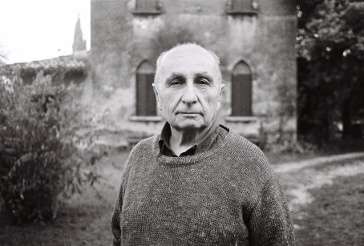
Franco Piavoli was born in Pozzolengo near Brescia in 1933. He attended high school and in 1956 he graduated in law in Pavia. He completed his training by dedicating himself to the study of horticulture as well as ecology. Passionate about painting and photography, he becomes friends with the young local photographer Ugo Mulas.
He also became a lawyer, then a teacher of law and business administration in secondary schools. He follows his passions with tenacity, creating a independent poetic cinema of rare beauty: a life and also a poetics matured in close contact with the territory of origin, the beautiful hamlet of Brescia, the amphitheater of the morainic hills, a constant source of ideas.
Piavoli’s films are characterized by their long takes, slow pans, and use of natural light. He often uses handheld cameras, and his films have a rough, unpolished look. This is intentional, as Piavoli wants to create films that feel real and immediate.
Piavoli’s films often explore themes of time, memory, and the relationship between man and nature. He is interested in the way that time can distort our perception of reality, and he often uses flashbacks and slow-motion to create a dreamlike atmosphere. Piavoli is also interested in the way that nature can reflect our inner state of mind, and his films often feature stunning landscapes and close-ups of natural details.
Brian De Palma

Brian De Palma (born September 11, 1940) is an American film director, screenwriter, and producer. He is considered one of the most important and influential directors of contemporary cinema.
De Palma was born in Newark, New Jersey, in 1940. He studied film at New York University, where he made several short films, including The Wedding Party (1963), which was his first film to receive a wide release.
In 1968, De Palma directed his first feature film, Murder à la mod, a noir film starring a young Angie Dickinson. The film was a critical success and launched De Palma’s career as a director.
Brian De Palma movies are controversial, not only in subject matter but also in style. In other words, it’s hard to passively accept a Brian De Palma film. It is an interesting work that often explores the taboo and dark side of the human experience, in some cases.
His Hitchcockian impact is evident in Sisters, Dressed to Kill and Body Double, but De Palma’s filmography is much more nuanced than that. Various other highlights include The Untouchables, Blow Out, and one of Stephen King’s most effective adaptations, Carrie. Brian De Palma has innovated the cinematic language with sequence where the organization of time and space is amazing. Perhaps the most extraordinary movie of his filmography is the one that paved his career: The Phantom of Paradise.
Michael Mann

Michael Mann (born February 5, 1943) is an American film director, screenwriter, and producer. He is best known for his stylized crime dramas, which often explore themes of obsession, violence, and moral ambiguity. Mann’s films are also known for their meticulous attention to detail, their gritty realism, and their use of innovative filmmaking techniques.
Michael Mann studied English literature at the University of Wisconsin–Madison, and then worked as a journalist for The Miami Herald. In the early 1970s, he moved to Los Angeles to pursue a career in television.
Mann began his career as a television writer and producer. He created the television series Miami Vice (1984–1989), which was a critical and commercial success. He also directed several episodes of the series, and his work on the show helped to establish his reputation as a director of stylish and suspenseful action dramas.
Mann made his feature film debut with Thief (1981), a neo-noir crime thriller starring James Caan. The film was a critical and commercial success, and it established Mann’s signature style of gritty realism and stylized violence.
Mann’s subsequent films include The Last of the Mohicans (1992), an epic historical action-drama starring Daniel Day-Lewis; Heat (1995), a neo-noir crime thriller starring Al Pacino and Robert De Niro; The Insider (1999), a biographical drama starring Russell Crowe and Al Pacino; Collateral (2004), a neo-noir crime thriller starring Tom Cruise and Jamie Foxx; Miami Vice (2006), a film adaptation of Mann’s television series; Public Enemies (2009), a biographical crime drama starring Johnny Depp; Blackhat (2015), a cybercrime thriller starring Chris Hemsworth; and Luck (2011–2012), a television series about horse racing.
Danny Boyle

Danny Boyle is an English filmmaker who has won an Academy Award, two BAFTA Awards, a Golden Globe Award, and a Directors Guild of America Award. He is known for his work on films including Shallow Grave, Trainspotting, 127 Hours, and Slumdog Millionaire.
Boyle was born in Radcliffe, Greater Manchester, England, on October 20, 1956. He studied English and film at Salford University and began his career making television documentaries. In 1994, he made his feature film debut with Shallow Grave, a black comedy crime thriller. The film was a critical and commercial success and launched Boyle’s career.
Boyle’s next film, Trainspotting (1996), was an adaptation of Irvine Welsh’s novel of the same name. The film was a critical and commercial success and is considered to be one of the greatest British films of all time. Trainspotting was nominated for the Academy Award for Best Adapted Screenplay and won the BAFTA Award for Best Film.
Luc Besson

Luc Besson is a renowned French filmmaker who has captivated audiences worldwide with his visually stunning and action-packed films. Born in Paris on March 18, 1959, Besson developed a passion for cinema at a young age, often skipping school to watch movies at local theaters. His filmmaking career took off in the 1980s with a series of critically acclaimed films, including “Le Dernier Combat” (1983), a post-apocalyptic action film, and “Subway” (1985), a stylish thriller set in the Parisian underground.
Besson’s international breakthrough came with “The Big Blue” (1988), a visually stunning underwater drama that captivated audiences with its breathtaking cinematography and story of two friends’ obsession with freediving. The film’s success propelled Besson into Hollywood, where he continued to make a mark with films like “La Femme Nikita” (1990), an action thriller about a female assassin, and “Léon: The Professional” (1994), a cult classic about a hitman and a young girl.
Besson’s versatility as a filmmaker is evident in his diverse filmography, which spans genres from action and science fiction to historical epics and romantic dramas. He has also ventured into producing and writing, showcasing his talent behind the scenes. His notable productions include “Taxi” (1998), a high-octane action-comedy, and “District 9” (2009), a South African sci-fi action film.
Joel and Ethan Coen
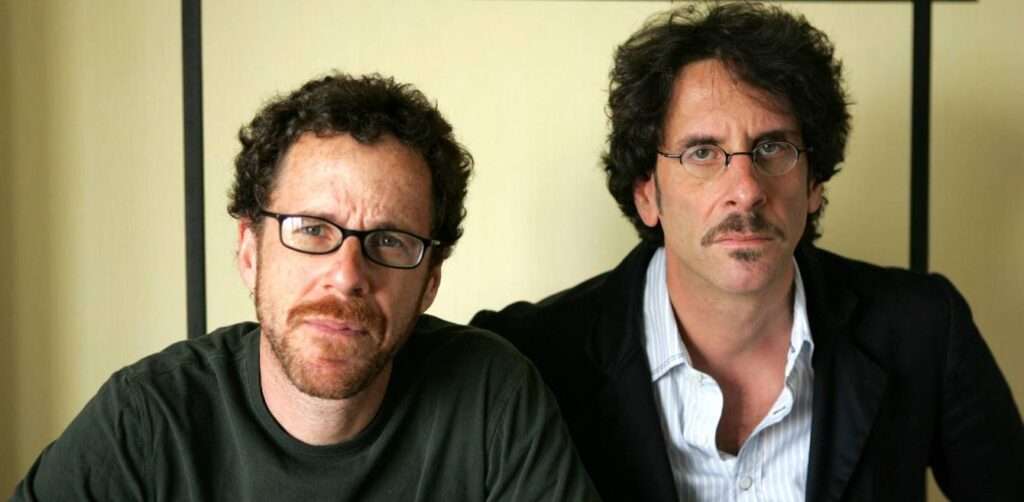
Joel and Ethan Coen are American filmmakers who are known for their quirky, dark, and often violent films. They have written and directed some of the most critically acclaimed and commercially successful films of the past 30 years, including Fargo (1996), The Big Lebowski (1998), No Country for Old Men (2007), and True Grit (2010).
Joel Coen was born on November 29, 1954, in St. Louis Park, Minnesota. Ethan Coen was born on September 21, 1957, in St. Louis Park, Minnesota. The brothers grew up in Minneapolis and attended Simon’s Rock of the Bard College in Great Barrington, Massachusetts. After graduating, they moved to New York City, where they worked as film editors and writers.
In 1984, the Coen brothers made their directorial debut with the crime comedy Blood Simple. The film was a critical success and established the Coen brothers as a unique and innovative voice in American cinema.
The Coen brothers have continued to write and direct a wide variety of films, including comedies, dramas, thrillers, and westerns. They have been praised for their sharp dialogue, their memorable characters, and their ability to blend genres and styles.
The Coen brothers have won four Academy Awards, including Best Picture and Best Adapted Screenplay for No Country for Old Men. They have also won three Golden Globe Awards and two BAFTA Awards.
David Lynch

David Lynch (born January 20, 1946) is an American filmmaker, painter, musician, and photographer. He is known for his surrealist, often disturbing, and psychologically charged films. His films explore themes of alienation, obsession, and the dark side of human nature.
He studied film at the University of Kansas, where he made several short films, including The Grandmother (1967) and Eraserhead (1977). Eraserhead, a dark and disturbing biopic about a man’s descent into madness, was Lynch’s first feature film and established his unique and unsettling style.
Lynch’s subsequent films include Elephant Man (1980), a biographical drama about Joseph Merrick, Blue Velvet (1986), a neo-noir mystery about a young man who discovers a dark secret in his neighborhood, Twin Peaks: Fire Walk with Me (1992), a prequel to his cult television series Twin Peaks, Mulholland Drive (2001), a neo-noir psychological thriller, and Inland Empire (2006), an experimental and Lynchian film about a Hollywood actress who becomes increasingly lost in a surreal and nightmarish world.
If you’ve read his publication on Transcendental Meditation, you know that David Lynch has a tendency to “capture” his ideas somewhere in the depths of his own subconscious. Watching his movies, it quickly becomes clear that this is completely correct.
What Lynch shows us are dreams, inexplicable and dark. Eraserhead is a challenge, Blue Velvet is a suburban headache, just as Lost Highway is a doppelgänger puzzle to put an end to all movies of this genre. The third season of Twin Peaks is nearly 18 hours of exciting and daring television. His crowning glory will most likely end up being Mulholland Dr., Regarded as one of the greatest masterpieces of all time. And can you forget the amazing The Elephant Man? An incredible filmography, full of milestones of cinema.
Matteo Garrone
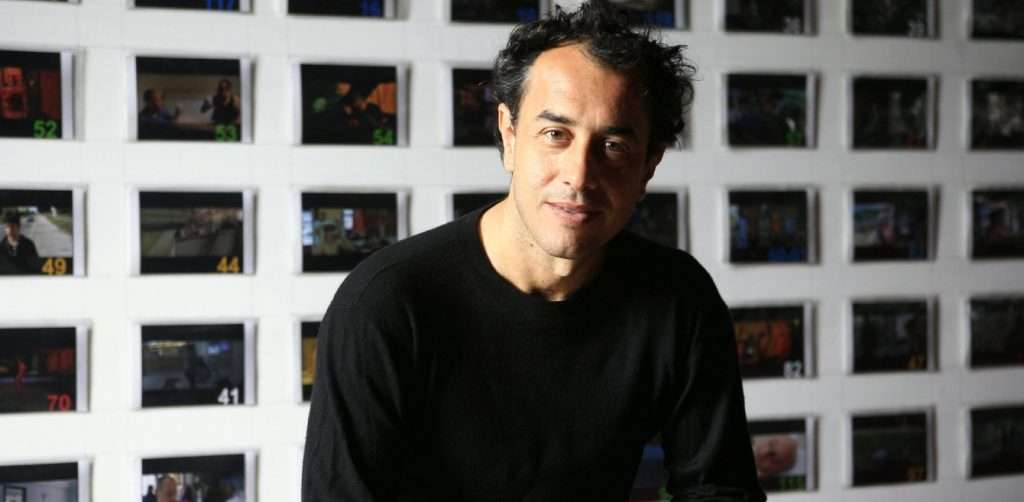
Matteo Garrone is an Italian film director, screenwriter, and producer. He was born in Rome on October 15, 1968.
Garrone began his career as a short filmmaker, winning the David di Donatello for Best Short Film in 1996 with Terra di mezzo. His feature film debut came in 2000 with L’imbalsamatore, a noir film set in Rome that won the Grand Jury Prize at the Venice Film Festival.
Garrone’s next film, Gomorrah (2008), is an adaptation of the novel of the same name by Roberto Saviano. The film is a realistic portrait of the Neapolitan Camorra and was a critical and commercial success, winning the Grand Jury Prize at the Cannes Film Festival.
Garrone has continued to direct successful films, including Reality (2012), a satirical film about Italian television that won the Golden Lion at the Venice Film Festival, and Dogman (2018), a drama set in Rome that won the Grand Jury Prize at the Cannes Film Festival.
Garrone is a master at creating a sense of realism in his films. His films are often set in real places and feature characters who are drawn from real life. Garrone is also a master at capturing the atmosphere of a place or a historical period.
Paolo Sorrentino

Paolo Sorrentino is an Italian film director, screenwriter, and producer. He was born in Naples, Italy, on May 31, 1970.
Sorrentino began his career as a short filmmaker, winning the David di Donatello for Best Short Film in 2001 with Un paradiso. His feature film debut came in 2001 with L’uomo in più, a drama that won the David di Donatello for Best New Director.
Sorrentino’s next film, Le conseguenze dell’amore (2004), is a drama set in Naples that won the Jury Prize at the Cannes Film Festival. The film was a critical and commercial success and launched Sorrentino’s international career.
Sorrentino has continued to direct successful films, including Il divo (2008), a biopic about Giulio Andreotti that won the Golden Globe for Best Foreign Language Film, La grande bellezza (2013), a satirical film about Italian society that won the Academy Award for Best Foreign Language Film, and È stata la mano di Dio (2021), a semi-autobiographical film that won the Special Grand Jury Prize at the Cannes Film Festival.
Sorrentino is a versatile director who has explored a variety of genres, including drama, comedy, biopic, and musical. His films are characterized by elegant and refined directing, intelligent screenplays, and a focus on beauty and melancholy.
Darren Aronofsky

Aronofsky was born in Brooklyn, New York, on February 12, 1969. He studied filmmaking at Harvard University and later at the American Film Institute (AFI). After graduating from AFI, Aronofsky made a number of short films, including Supermarket Sweepstakes (1991) and Pi (1998).
Aronofsky’s breakthrough came with his 2000 film Requiem for a Dream, a dark and disturbing drama about four characters who are all struggling with addiction. The film was a critical and commercial success, and it established Aronofsky as a major new talent in American cinema.
He followed up with a series of acclaimed films, including The Fountain (2006), a visually stunning epic about love and immortality; The Wrestler (2008), a gritty and realistic drama about a professional wrestler; Black Swan (2010), a psychological thriller about a ballerina who becomes obsessed with perfection; Noah (2014), a biblical epic about the story of Noah’s Ark; and Mother! (2017), a psychological horror film about a woman who is tormented by a series of strange visitors to her home.
Aronofsky’s best movies are anchored in stubborn and heartbreaking anti-heroes, driven to self-destruction by their charm. Another notable point to consider about his filmography is his ability to swing between 16mm lo-fi (Black Swan, The Wrestler) and gorgeous and even lush (The Fountain, Noah).




